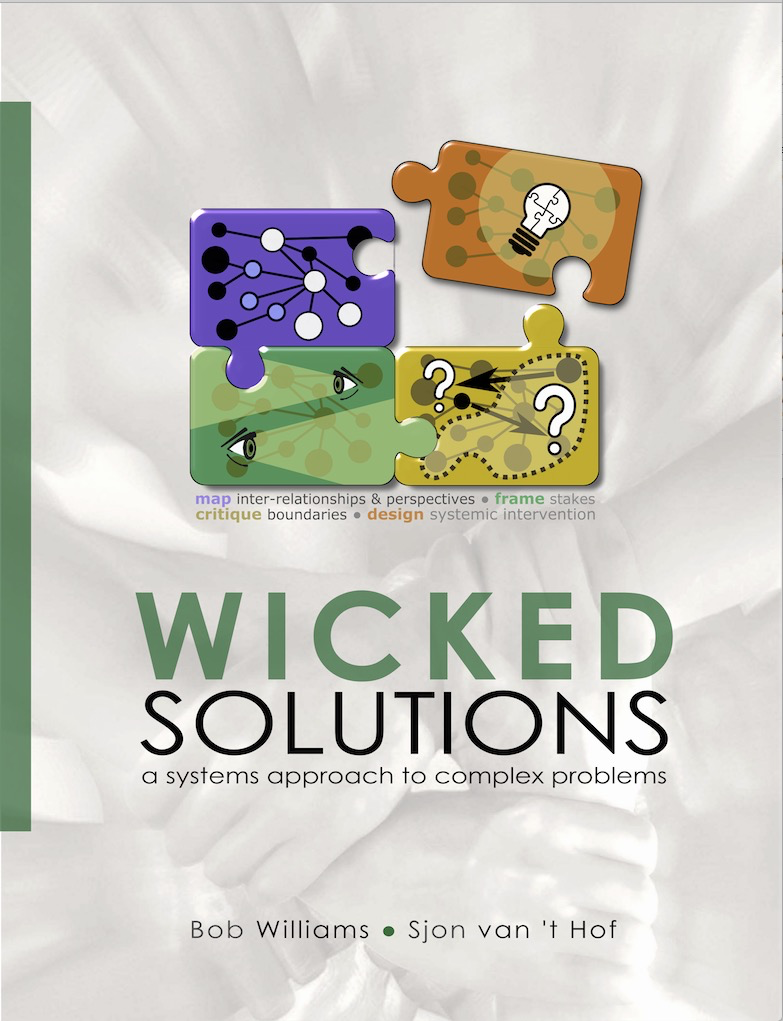The last of the five systems approaches of Systems approaches to managing change (Reynolds & Holwell, 2010) deals with critical system heuristics (CSH), which was mostly developed by Werner Ulrich. For those of us who like Joseph Novak’s work: CSH shows some resemblence to Gowin’s vee, but I won’t go into that. First of all, it is important to realize that systems have boundaries. In a way, a system is defined by the boundary imposed on it by the systems practitioner. CSH can help determine the validity of an actionable system or a project design as a basis for action by analysing four boundary issues: motivation, control, knowledge, and legitimacy. Each boundary issue gives rise to a number of critical questions. By answering them we can make explicit the judgements that have guided a particular intervention or decision. In international development – as in most other walks of life that really matter – it happens very often that decisions are taken that may seem ambiguous or actually really are ambiguous. This is probably the corollary of the complexity of the everyday systems we try to cope with and the selective nature of how we make up our minds . Of course there is nothing wrong with getting things done, but we risk losing a whole lot of credibility if we don’t pay attention to the boundary issues. For more information, see A Brief Introduction to Critical Systems Heuristics (CSH).
For those of us who like Joseph Novak’s work: CSH shows some resemblence to Gowin’s vee, but I won’t go into that. First of all, it is important to realize that systems have boundaries. In a way, a system is defined by the boundary imposed on it by the systems practitioner. CSH can help determine the validity of an actionable system or a project design as a basis for action by analysing four boundary issues: motivation, control, knowledge, and legitimacy. Each boundary issue gives rise to a number of critical questions. By answering them we can make explicit the judgements that have guided a particular intervention or decision. In international development – as in most other walks of life that really matter – it happens very often that decisions are taken that may seem ambiguous or actually really are ambiguous. This is probably the corollary of the complexity of the everyday systems we try to cope with and the selective nature of how we make up our minds . Of course there is nothing wrong with getting things done, but we risk losing a whole lot of credibility if we don’t pay attention to the boundary issues. For more information, see A Brief Introduction to Critical Systems Heuristics (CSH).
24 Nov. 2012 update: A systems approach is good if it helps structure ideas on a complex system (say a pro-equity “development’ intervention or a piece of legislation) in a coherent and logically compelling way without going out of bounds (remember: a system is also defined by its boundaries!). My first experiences with it suggest that CSH is indeed a great tool for coherence and highly practical. Try it for yourself by filling out Table 1 (unfolding normative boundary judgements for an intervention using CSH) using a case of your own. The table can be found in below reference.
P.S. This may do for starters, but I should probably review it with the full benefit of:
Williams, Bob, and Martin Reynolds. 2012. “Systems Thinking for Equity-focused Evaluations.” In Evaluation for Equitable Development Results, 115–141. New York: UNICEF. http://mymande.org/sites/default/files/Evaluation_for_equitable_results.zip.

